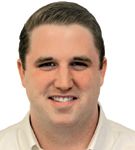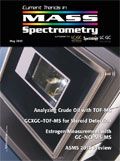The Exception to the Conference Industry's Rule
For anyone who makes his or her living in the field of analytical chemistry, and more specifically, in the fields of chromatography or spectroscopy, the debate concerning the state of the conference industry is well known to say the least.
For anyone who makes his or her living in the field of analytical chemistry, and more specifically, in the fields of chromatography or spectroscopy, the debate concerning the state of the conference industry is well known to say the least. In fact, many might say it is something of a dead horse at this point. The prevailing wisdom that attendance at face-to-face events is down and that it may never reach previous levels has been recited often, and for many, this was only reinforced further by the slight drop-off in attendance at Pittcon 2010 in March.

David Walsh
However, the month of May will see the conference industry's glaring exception taking place in the 58th ASMS Conference on Mass Spectrometry and Allied Topics, an event that gives pause to even the most ardent proponent of the virtual or video conference. Held in Salt Lake City, Utah this year, from May 23 to 27, ASMS is an event that has consistently grown in both attendee numbers and scientific importance, and this year promises to be no different. With mass spectrometry technology continuing to make advances at a rapid pace, and with a virtually recession-proof marketplace with numerous application areas, the MS market is predicted to continue to grow for years to come (SDi Global Assessment Report, 10th Edition).
Covering this critically important conference has become one of LCGC's and Spectroscopy's highest priorities in recent years, and beginning with this issue, we promise to bring readers the most comprehensive ASMS coverage in the field. The ASMS Preview on p. 46 will provide an overview of what readers can expect at this year's show, from technical sessions to tourist sites, while the LCGC/Spectroscopy E-Show Dailies live from Salt Lake City later this month will give industry professionals a day-by-day report on all that is happening. Readers can also look for an ASMS Review in the June issue of LCGC North America, recapping the highlights of the show, reporting on final attendance figures, and more.
In short, LCGC and Spectroscopy should be the analytical chemist's most important resource, not only for this year's ASMS Conference, but for MS-related research and market information in general.
Enjoy the issue, and we look forward to seeing you in Utah.

David Walsh
Editor-in-chief

New Method Explored for the Detection of CECs in Crops Irrigated with Contaminated Water
April 30th 2025This new study presents a validated QuEChERS–LC-MS/MS method for detecting eight persistent, mobile, and toxic substances in escarole, tomatoes, and tomato leaves irrigated with contaminated water.

.png&w=3840&q=75)

.png&w=3840&q=75)



.png&w=3840&q=75)



.png&w=3840&q=75)









